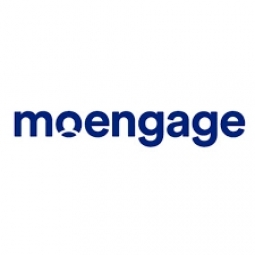技术
- 分析与建模 - 计算机视觉软件
- 网络与连接 - 无线接入网
适用行业
- 水泥
- 城市与自治市
适用功能
- 产品研发
用例
- 临床图像分析
关于客户
FabHotels 是一家新时代连锁酒店,以经济的价格提供舒适可靠的住宿。该品牌在印度 50 多个城市经营着 600 多家酒店,其中大部分位于黄金地段。众所周知,他们为超过 100 万客户提供一流的体验和便利设施。 FabHotels 致力于提供“物有所值”的住宿,并一直在开展一系列电子邮件活动以与客户保持联系,提供时事通讯、折扣等。
挑战
FabHotels 是一家新时代的经济型连锁酒店,其电子邮件促销活动面临着重大挑战。尽管每天运行多个营销活动,但糟糕的域名声誉导致大部分电子邮件进入客户的垃圾邮件文件夹,严重影响了他们的电子邮件营销策略。这在旅游业中尤其成问题,因为品牌在高购买意向的微时刻与用户互动至关重要。两年多来,FabHotels 一直在使用各种电子邮件供应商和工具来开展活动。最初,这些活动表现良好,直到品牌达到特定的每日电子邮件阈值。一旦达到此阈值,域声誉就会下降,电子邮件开始进入垃圾邮件文件夹,从而使电子邮件作为客户参与渠道失效。
解决方案
为了应对这一挑战,FabHotels 求助于 MoEngage 电子邮件咨询和电子邮件营销活动功能。他们开展了一系列实验性电子邮件活动,以确定电子邮件停止进入收件箱的确切数量,并了解可能导致电子邮件域声誉下降的任何微观因素。 MoEngage 的团队通过端到端电子邮件计划审核对这些实验活动进行了深入分析。这包括检查电子邮件频率、域名、基础设施、复制和设计以及客户细分。然后,他们设计了一种三管齐下的方法来提高电子邮件域声誉:修改客户细分策略、优化发送时间以及调整电子邮件活动频率。此外,FabHotels 的内容策略根据推广的服务进行了修改,并纳入了电子邮件内容最佳实践。
运营影响
数量效益

Case Study missing?
Start adding your own!
Register with your work email and create a new case study profile for your business.
相关案例.

Case Study
Turning A Stadium Into A Smart Building
Honeywell created what it called the “intelligent system” for the National Stadium in Beijing, China, turning the venue for the opening and closing events at the 2008 Summer Olympics into a “smart building.” Designed by highly controversial artist Ai Weiwei, the “Bird’s Nest” remains one of the most impressive feats of stadium architecture in the world. The 250,000 square meter structure housed more than 100,000 athletes and spectators at a time. To accommodate such capacity, China turned to Honeywell’s EBI Integrated Building Management System to create an integrated “intelligent system” for improved building security, safety and energy efficiency.

Case Study
System 800xA at Indian Cement Plants
Chettinad Cement recognized that further efficiencies could be achieved in its cement manufacturing process. It looked to investing in comprehensive operational and control technologies to manage and derive productivity and energy efficiency gains from the assets on Line 2, their second plant in India.
.png)
Case Study
Smart Street Light Network (Copenhagen)
Key stakeholders are taking a comprehensive approach to rethinking smart city innovation. City leaders have collaborated through partnerships involving government, research institutions and solution providers. The Copenhagen Solutions Lab is one of the leading organizations at the forefront of this movement. By bringing together manufacturers with municipal buyers, the Copenhagen Solutions Lab has catalyzed the development and deployment of next-generation smart city innovations. Copenhagen is leveraging this unique approach to accelerate the implementation of smart city solutions. One of the primary focus areas is LED street lighting.

Case Study
Buoy Status Monitoring with LoRa
The Netherlands are well-known for their inland waterways, canals, sluices and of course port activities. The Dutch Ministry of Infrastructure indicates that there are thousands of buoys and fixed items in and near water environments that would profit from IoT monitoring. One of the problems with buoys for example, is that they get hit by ships and the anchor cable breaks. Without connectivity, it takes quite some time to find out that something has happened with that buoy. Not to mention the costs of renting a boat to go to the buoy to fix it. Another important issue, is that there is no real-time monitoring of the buoys at this moment. Only by physically visiting the object on the water, one gains insight in its status.

Case Study
Barcelona Case Study
Barcelona’s heavy traffic and its associated high levels of pollution were the primary factors that motivated some companies and universities to work on strategies for improving traffic in the city centre. Bitcarrier is one of the technologies involved in the In4Mo Project, whose main objective is to develop the applications that form the core of smart mobility, one of the fundamental pillars of the smart city concept.








